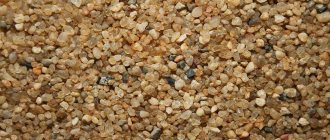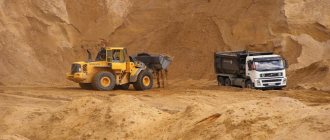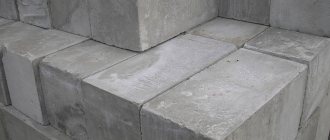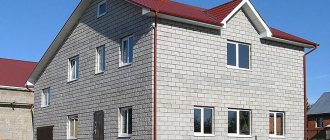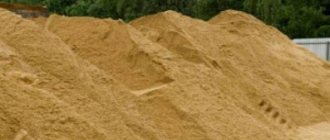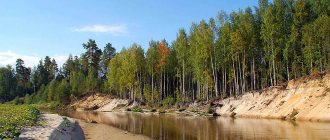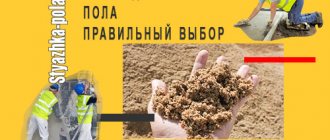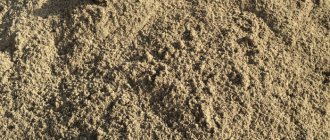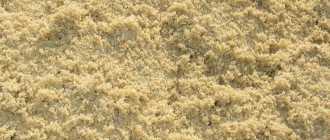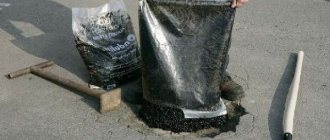Steps
Using the oven
- Buy quartz sand.
Quartz sand is the main ingredient for glass production. Iron-free glass is prized for its clarity because if the glass contains iron, the glass will appear greenish.
- Wear a mask if you are working with very fine quartz sand. If inhaled, it may irritate the throat and lungs.
- Quartz sand can be purchased in online stores. It is quite cheap, a bag weighing 25 kg costs around 200 rubles. If you want to work on an industrial scale, then for large quantities specialized sellers can offer good prices - sometimes less than 2,000 rubles per ton.
- If you cannot find sand that contains few impurities, the greenish tint effect can be compensated for by adding small amounts of manganese dioxide. And if you want greenish glass, leave the iron as is!
- Add sodium carbonate and calcium oxide to the sand.
Sodium carbonate (called soda ash) reduces the temperature at which industrial glass is produced. However, it causes water to corrode the glass. Therefore, in order to neutralize this phenomenon, calcium oxide, or lime, is additionally introduced into the glass. In order to make glass more resistant, magnesium and/or aluminum oxides are introduced into it. Typically, these additives occupy no more than 26–30 percent of the glass composition.
Depending on the purpose of the glass, add other chemicals.
The most common additive for decorative glass is lead oxide, which provides the shine of crystal, as well as its low hardness, making it easier to cut, and its low melting temperature. Eyeglass lenses may contain lanthanum oxide, which is used for its refractive power, while iron promotes the absorption of iron by the glass.
- Lead crystal can contain up to 33 percent lead oxide, but the more lead, the more experience it takes to shape the molten glass, so many glassmakers choose low lead content.
As noted above, iron impurities in quartz glass give it a greenish appearance, so iron oxide is added to enhance the greenish tint, just like copper oxide. Sulfur compounds give yellowish, amber, brownish and even black tints, depending on how much additional carbon or iron is added to the glass charge.
Place the mixture in a good temperature-resistant crucible.
The crucible must withstand the exceptionally high temperature that is reached in the furnace. Depending on the additives, it can range from 1500 to 2500 degrees. The crucible should be such that it is not difficult to grasp it with metal tongs and rods.
Melt the mixture until liquid.
For industrial silicate glass this is done in a gas-heated furnace; special glasses can be melted in an electric, pot or muffle furnace.
- Quartz and sand without impurities transform into a glassy state at a temperature of 2300 degrees Celsius. The addition of sodium carbonate (soda) reduces the temperature required for glass formation to 1500 degrees Celsius.
This involves stirring the glass until it is evenly thick and adding substances such as sodium sulfate, sodium chloride or antimony oxide.
Mold the molten glass.
Glass can be formed using one of the following methods:
- The glass melt can be poured into a mold and allowed to cool. This method was used by the Egyptians and is how most optical lenses are created.
A large amount of molten glass can be collected at the end of a hollow pipe and then blown out by turning the pipe. Glass is formed by the air blown into the pipe, the force of gravity acting on the molten glass, and any tools the glassblower uses to work the molten glass.
This process is called annealing, and it removes any point sources of stress that may form as the glass cools. Unannealed glass is much less durable. Once the process is complete, the glass can be coated, laminated, or otherwise treated to increase strength and durability.
Using a Charcoal Fryer
- Make a makeshift oven out of a charcoal-fired barbecue grill.
This method uses the heat generated by flames from burning charcoal to melt quartz sand into glass. The materials used are relatively cheap and available - theoretically, to prepare everything you need to make glass, you only need to run to a hardware store. Use a large barbecue grill - a standard size dome grill will do. It should be as thick-walled and durable as possible. Most BBQ grills have a vent on the bottom - open it.
- Even at the extremely high temperatures achieved with this method, it can be very difficult to melt sand on a grill. Before you begin, add a small amount (about 1/3-1/4 of the sand's volume) of washing soda, lime and/or borax to the sand. These additives reduce the melting point of sand.
If you're going to blow glass, have a long, hollow metal tube handy. If you are going to pour glass into a mold, prepare it in advance. You need a shape that won't burn or melt from the heat of the molten glass, graphite works great for this purpose.
This method involves heating the barbecue grill beyond its normal temperature limits - so much so that it may even melt the grill itself.
Careless operation using this method poses the risk of serious injury or even death
. Work with caution. Keep a large amount of soil, sand, or a fire extinguisher designed for high temperatures on hand in case you need to reduce the intensity of the fire.
Take all possible precautions to protect yourself and your belongings from high temperatures.
Work using this method on a concrete surface outdoors, with sufficient space around.
Do not use irreplaceable equipment. Stay away
from the grill when you are boiling glass. You will also need to wear as much protective clothing as possible, including:
- high-strength gloves or oven mittens;
welding mask;
Using duct tape or some other means, bend the hose so that it blows directly into the vent hole on the bottom without touching the body of the grill. You'll probably need to attach a hose to one of the grill's legs or wheels. Place the vacuum cleaner itself as far away from the grill as possible.
- Make sure that the hose is secure and does not move: if it comes loose while glass is brewing, do not
approach the grill if it is very hot.
Turn on the vacuum cleaner to check the position of the hose. A precisely placed hose will blow directly into the vent.
Use more charcoal than you would for roasting meat. Successful results are observed when the grill is filled almost to the brim. Place a cast iron pan or crucible filled with sand in the middle of the grill, sprinkled with charcoal.
Fulgurites
(eng. Fulgurite) - hollow tubes in the sand, consisting of melted silica, and melted surfaces on rock outcrops, formed under the influence of a lightning discharge. The inner surface is smooth and melted, and the outer surface is formed by grains of sand and foreign inclusions adhering to the melted mass. The diameter of the tubular fulgurite is no more than a few centimeters, the length can reach several meters; individual finds of fulgurites 5-6 meters long have been noted.
During a lightning discharge, 10 9 -10 10 joules of energy are released. Lightning can heat the channel through which it moves to 30,000°C, five times higher than the temperature on the surface of the Sun. The temperature inside the lightning is much higher than the melting point of sand (1600-2000°C), but whether the sand will melt or not depends on the duration of the lightning, which can range from tens of microseconds to tenths of a second. The amplitude of a lightning current pulse is usually equal to several tens of kiloamperes, but sometimes it can exceed 100 kA. The most powerful lightning strikes cause the birth of fulgurites - hollow cylinders of melted sand.
The appearance of a glass tube in sand during a lightning discharge is due to the fact that there is always air and moisture between the grains of sand. The electric current of lightning heats air and water vapor to enormous temperatures in a fraction of a second, causing an explosive increase in air pressure between grains of sand and its expansion. The expanding air forms a cylindrical cavity inside the molten sand, and subsequent rapid cooling fixes the fulgurite, a glass tube, in the sand.
Often carefully dug out of sand, fulgurite is shaped like a tree root or branch with numerous shoots. Such branched fulgurites are formed when a lightning strike strikes wet sand, which is known to have greater electrical conductivity than dry sand. In these cases, the lightning current, entering the soil, immediately begins to spread out to the sides, forming a structure similar to the root of a tree, and the resulting fulgurite only repeats this shape. Fulgurite is very fragile, and attempts to remove adhered sand often lead to its destruction. This especially applies to branched fulgurites formed in wet sand.
Fulgurites are sometimes also called melted solid rocks, marble, lavas, etc. ( petrofulgurites
), formed by a lightning strike; Such melts are sometimes found in large quantities on the rocky peaks of some mountains. For example, the andesite that forms the peak of Little Ararat is penetrated by numerous fulgurites in the form of green glassy passages, which is why it received the name fulgurite andesite from Abikh.
The longest excavated fulgurites went underground to a depth of more than five meters. Fulgurites are also called melts of solid rocks formed by a lightning strike; they are sometimes found in large numbers on rocky mountain tops. Fulgurites, consisting of melted silica, usually appear as cone-shaped tubes as thick as a pencil or a finger. Their inner surface is smooth and melted, and the outer surface is formed by grains of sand adhering to the melted mass. The color of fulgurites depends on the mineral impurities in the sandy soil. Most are tan, gray or black in color, but greenish, white or even translucent fulgurites are also found.
“A severe thunderstorm passed, and the sky above us had already cleared. I walked across the field that separates our house from my sister-in-law's house. I had walked about ten yards along the path when suddenly my daughter Margaret called me. I stopped for about ten seconds and had barely moved on when suddenly a bright blue line cut through the sky, hitting the path twenty paces in front of me with the roar of a twelve-inch gun and raising a huge column of steam. I went further to see what kind of trail the lightning had left. In the place where the lightning struck, there was a patch of burnt clover about five inches in diameter, with a half-inch hole in the middle... I returned to the laboratory, melted eight pounds of tin and poured it into the hole... What I dug out, when the tin had hardened, looked like a huge, slightly curved dog-arp, heavy as it should be in the handle and gradually tapering to the end. It was a little longer than three feet” (quoted from V. Seabrook. Robert Wood. - M.: Nauka, 1985, p. 285).
Employees of the Autonomous University of Mexico City have revealed new details about the history of the emergence of the Sahara Desert. According to them, 15 thousand years ago the Sahara (at least that part of it that is located in the southwest of Egypt) was in a temperate climate and could please the eye not with sand dunes, but with a variety of vegetation. For their research, a team of chemists led by Dr. Rafael Navarro-Gonzalez found “frozen” lightning, or fulgurite.
Fulgurites (pictured) are sand baked from a lightning strike. The melting point of sand is about 1700°C, the power of the electric charge is enough to melt it. Therefore, hollow branched glass tubes are formed in the thickness. Their inner surface is smooth, but the outer surface is rough, because it is formed by grains of sand adhering to the melted mass. In addition, such lightning frozen into the sand also records many other natural inclusions characteristic of a particular stage of geological history.
The fulgurite Navarro-Gonzalez discovered was different from ordinary lightning traces. Egyptian fulgurite contained small bubbles. Using a laser, scientists opened the bubbles and found in them a gas mixture of carbon oxides, carbon monoxide and nitrogen oxides. As the chemist noted, these substances could be formed as a result of the oxidation of organic substances when heated.
Analysis of the carbon isotope ratios of the compounds showed Navorro-Gonzalez and his colleagues that at the time of the lightning strike, the affected area should have contained grass, shrubs and other vegetation typical of semi-arid areas. It is worth noting that now in this area of the Sahara Desert such plants cannot grow under any circumstances. And scientists decided to calculate the time to understand when grass grew in place of the Sahara.
To establish the date of occurrence of the electrical discharge, a member of the research team, geochronologist Shannon Magan from the Geological Research Center in Denver (USA), used the thermoluminescence method - he heated fulgurite to 500°C and assessed the energy of electrons “heated” by natural radiation, which were released in the form of light during heat treatment. Its quantity directly indicates the moment of last heating. In this case, it occurred at the moment of a lightning strike that occurred 15 thousand years ago. Analysis of fulgurite once again confirmed the theory that the Sahara was not so long ago a completely habitable region with a temperate climate. According to Steve Forman, a geochronologist at the University of Illinois at Chicago, scientists from Mexico City demonstrated a new approach to studying the environmental situation of that period and drew the attention of other researchers to previously unexplored possibilities of fulgurites.
As for the comments of representatives of Russian science, as Sergei Tikhotsky, an employee of the Research Institute of Earth Physics of the Russian Academy of Sciences, noted in a conversation with a correspondent of Gazeta.Ru, from the point of view of physics, the Navarro-Gonzalez team acted competently: “Everything that was done by scientists is included into the classical model for determining the composition and age of a substance,” he said. Accordingly, no falsifications or hoaxes can be noted during this isotope analysis - rather, this is a completely traditional method of research. Employees of the Institute of Atmospheric Physics of the Russian Academy of Sciences also confirmed to Gazeta.Ru the validity of the theory of the international team of scientists. According to Sergei Demchenko, a senior researcher at the Laboratory of Climate Theory, vegetation could well have existed on the territory of Southwestern Egypt 15 thousand years ago.
Moreover, even during the Holocene period (about 6 thousand years ago), this area could have been located within the temperate climate zone. As Demchenko’s colleague, Ph.D. Alexei Eliseev, clarified, vegetation in different areas of the Sahara Desert was present at different times, and, for example, on the Arabian Peninsula, vegetation persisted until the era of Alexander the Great.
As for the figure of 15 thousand years, scientists noted that the end of the last ice age dates back to approximately this time. This indirectly confirms the theory of Navarro-Gonzalez, so that in general the discovery of Mexican scientists can be classified as verifiable. Details of Dr. Navarro-Gonzalez's team's research can be found in the Journal of the Geological Society of America.
Apparently the first description of fulgurites and their connection to lightning strikes was made in 1706 by Pastor David Hermann
). Subsequently, many found fulgurites near people struck by lightning. Charles Darwin, during his trip around the world on the Beagle, discovered on the sandy shore near Maldonado (Uruguay) several glass tubes that went vertically down more than a meter into the sand. He described their sizes and associated their formation with lightning discharges. Famous American physicist Robert Wood received an “autograph” of the lightning that almost killed him
The main components of a huge number of building materials are natural components that are characterized by the required properties and are found in sufficient quantities for production on an industrial scale. Quartz sand is considered one of the most common natural minerals and is used in all areas of construction activities. The characteristics of sand have allowed it to gain such high popularity.
Quartz sand is one of the most common building materials and is used in various fields of construction.
Before you begin to get acquainted with the chemical properties of the material, it is worth finding out how they are ensured. The main component of quartz sand is silicon dioxide, which is represented by quartz. Its formula is as follows: SiO2. In its composition you can find iron oxides, organic impurities, clay and other metals. The quartz content in the primary mineral is usually 93-95%.
The principle of operation of building compositions used in the production of slabs and blocks is based on the chemical interaction of the components. The inorganic chains formed as a result guarantee the necessary parameters of the material.
Silicon dioxide is an acidic oxide, which causes it to react with aluminum and calcium compounds found in limestone and clay. The process can occur when the wet composition dries or during thermal baking.
Hot application technology
The technology for using hot sand is simple. It is poured onto the surface within the future boundaries of the upcoming excavation and left for several hours until the area is properly heated to the required depth. On the Taxi-Sand website you can order hot sand with delivery to anywhere in Moscow or the Moscow region. By special order, hot sand can be delivered to a distance of up to 100 km from Moscow. In this case, it is necessary to agree on the calendar day and exact time of delivery, taking into account traffic congestion in Moscow and the Moscow region on weekdays and weekdays.
Delivery requests are accepted by phone or email.
Quarry sand
Quarry sand is extracted from quarries by breaking down rocks. Depending on the location of the quarry, sand can have different composition, size and structure, and its final properties depend on the extraction method (washing, sieving and open method).
Technical properties
- Color: shades of yellow and brown;
- Granule shape: angular;
- Density of dry composition (kg/m3): 1.6 – 1.8;
- Impurity content (%): up to 10;
- Clay lump content (%): 0;
- Fractions (mm): 1.5 – 4;
- Radioactivity: 1 class.
Types of quarry sand
- Washed sand is extracted from quarries in flooded areas using hydromechanical equipment. This sand is clean, free of impurities and other debris.
- Seeded sand is extracted in quarries by sifting from stones and other large debris.
- Sandy soil is untreated quarry sand containing various impurities.
Scope of application of quartz sands
Quartz sands are used in the manufacture of foundry molds for iron and steel castings. In the manufacture of steel castings, sands with a particle diameter slightly larger (by one sieve size) than for cast iron castings are used. This is necessary to increase the fire resistance and gas permeability of the mixture. To make rods when thermosetting resins are used as a binder, quartz sand containing less than 0.5% clay components is used. This is due to the fact that with a higher content of clay components, the consumption of expensive binder increases sharply, which leads to higher prices for mixtures and castings. At the same time, the gas content of the mixtures increases, which can lead to increased defects in gas shells. Resins are expensive binders, but they provide significant improvements in the accuracy of cores and castings.
The quality indicators regulated for the best domestic brands of sand meet the requirements of the standards of Germany, England, and the USA.
